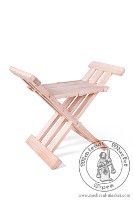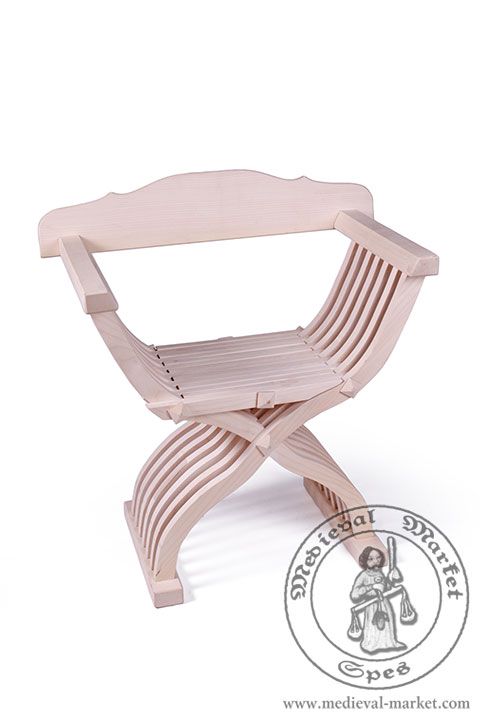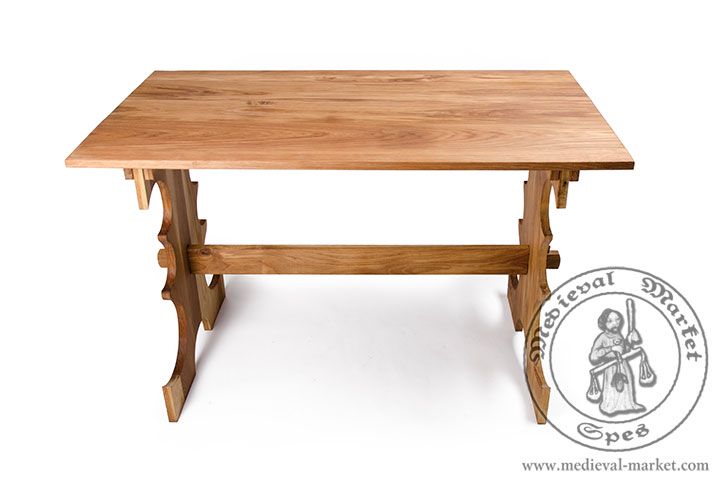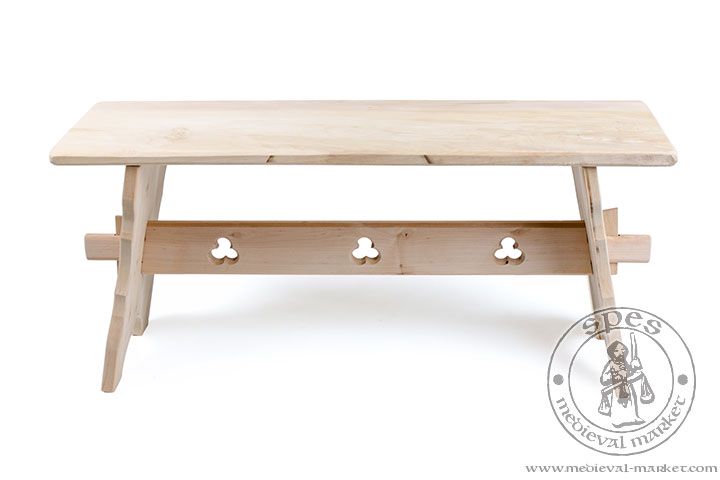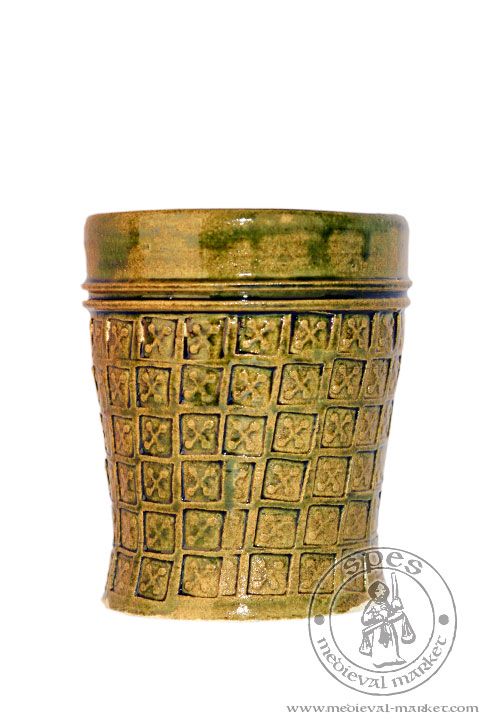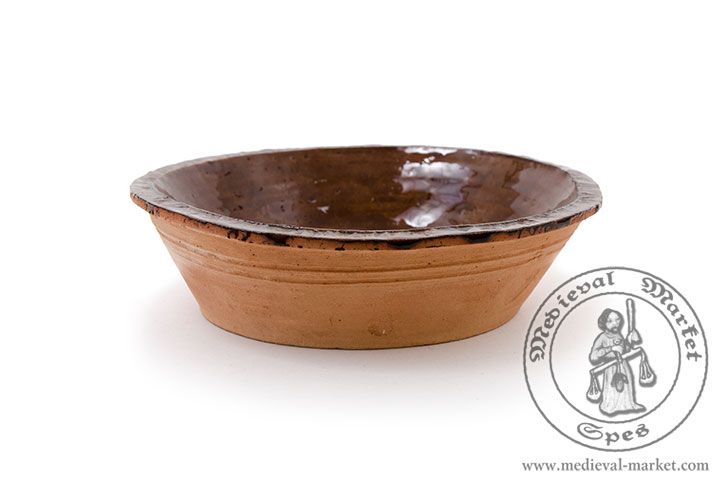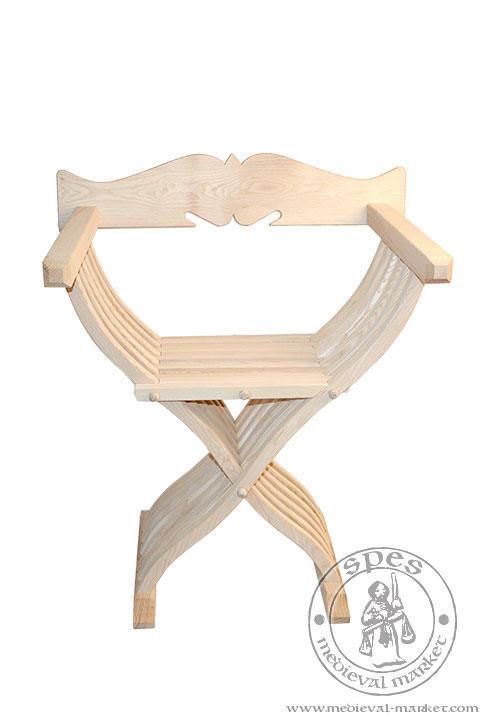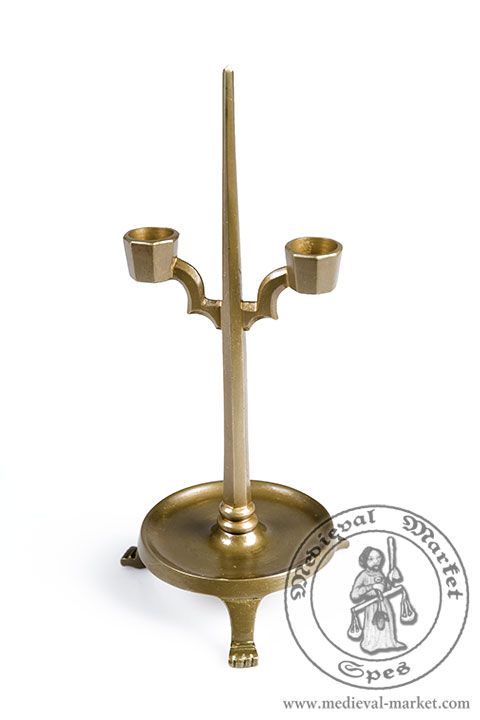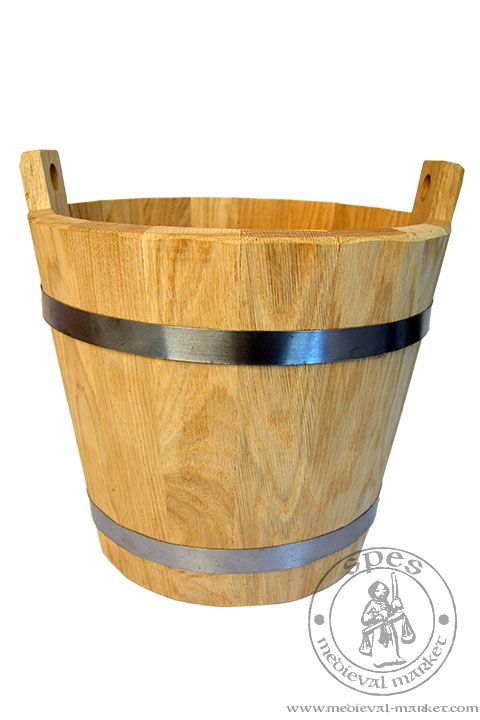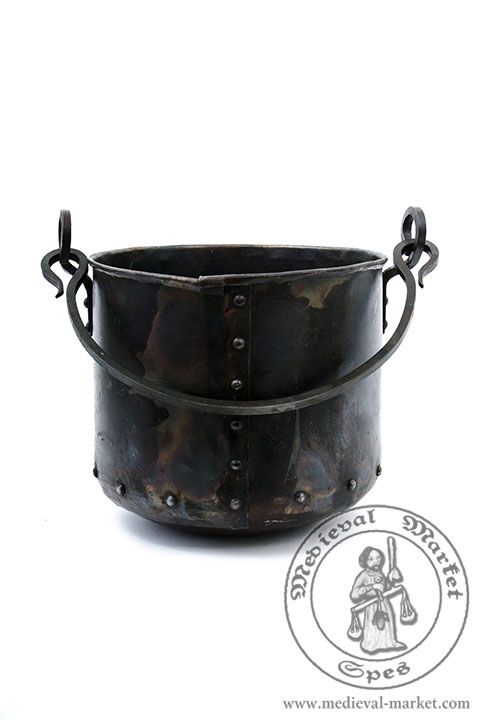If you wish to adjust your cookie preferences for this website, you can do so using your browser settings.
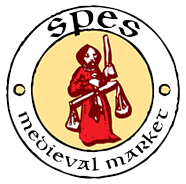


Category: Furniture > furniture
Curule chair
Curule chair
Century: XIV| CODE | Material |
Standard
|
Price | |
| MNDS0211 | Oak | Mixed | 198.00 EUR |
|
| MNSs0210 | Pine | Mixed | 159.00 EUR |
|
* Please write the extra wishes in the place 'additional information' at the end of the order.
Lowest price in the last 30 days
See how to place an order for several people
A curule chair is a type of folding stool, popular since the ancient times. This kind of historical chair we make from pine or oak. On special request, we can prepare a curule seat from other wood.
A curule chair does not have a backrest. The seat of this medieval chair is on the height of 45 cm. Its straight, crossed legs are joined with a ridge-pole crossing the laths. A characteristic features of our foldable chair are the low armrests placed on the sides of product.
The history of a curule seat
These folding stools were known even in the Ancient Egypt. Moreover, in Ancient Rome the curule chair (sella curulis) was reserved only for the clerks of the higher status. In the Late Middle Ages the seat was given a backrest and that's how it evolved into the Savonarola chair.
An example of a curule seat can be found in “Grandes Chroniques de France”. One of the illustrations presents John the Good, King of France, sitting on this historical chair. It's a scene from the constituting “Ordre de l'Étoile” (Order of the Star).
In spite of fact that medieval furniture was used as house equipment, we can also find it in knights' camps. These items were a proof of high social status and wealthiness of their owner. Among camp equipment we can find: buckets, baskets, pots, tables and stools, historical chairs, chests, and beds. Early Gothic furnishings were usually made of weighty planks of wood. The richest group of original furniture saved till modern times are chests. These are often characterized by rich adornments. They often have visible emblems and embroideries.
NOTE! There is an option of impregnating the medieval furniture with linen oil. If you are interested, please let us know in the “additional information” field when placing an order. The cost of impregnation is 6% of additional payment from the price of the product.
Due to the fact that our furniture is a result of craftsman's work, the measurements provided here might differ from the real ones by maximum +/- 1.5 cm.
Our medieval furniture is finished with sandpaper of 60-level grit. Therefore, in some softer spots of a piece of furniture, you may find some slight, natural wood nap which is a result of polishing. It practically disappears after impregnating the furniture with the use of natural methods such as linen oil or wax. If you plan to varnish the furniture in more contemporary way and want us to make the furniture’s surface smoother (i.e. use sandpaper of higher grit), please contact us and we will tell you the price of the option.
ATTENTION! You can order impregnation of furniture with linen oil for a surcharge. To choose this option, write your wish in "additional information" box during placing the order. The price of impregnation is 6% of the value of the product.
Although furniture was home equipment, we can also find furniture in knight camps, where they spoke of the status and wealth of the owner. In camps we can find such equipment as: buckets, baskets, pots, tables, stools, chairs, chests and even beds. The early gothic furniture was made from massive boards. Out of the survived originals the most common are chests, which particularly stand out because of the richness of the form (there often appear on them carves and emblems of the owners).





 Female Clothing
Female Clothing Male clothing
Male clothing Accessories
Accessories
 Tents
Tents Armament
Armament HMB Line
HMB Line Miscellaneous
Miscellaneous Rent
Rent In stock
In stock Special Offers
Special Offers Search
Search Your Account
Your Account About us
About us Sizing
Sizing How to buy
How to buy Blog
Blog Links
Links Events
Events
